Blue Spring State Park Manatees
Blue Spring State Park Manatees
Blue Spring State Park -
Home of the Manatees
Nestled in the heart of Orange City, Florida, Blue Spring State Park emerges as a pristine haven, enchanting visitors with its crystal-clear waters and lush natural surroundings. However, what truly sets this idyllic destination apart is the annual migration of manatees to its warm embrace. Serving as a sanctuary for these gentle giants, Blue Spring State Park boasts a unique connection to the 72-degree waters of the St. Johns River, providing a refuge for manatees seeking respite from the colder months. As you step into this ecological wonderland, prepare to be captivated by the graceful presence of manatees and the harmonious coexistence of diverse aquatic life. Join me on a journey to discover the enchanting world of Blue Spring State Park and the mesmerizing tales that unfold beneath its serene surface.
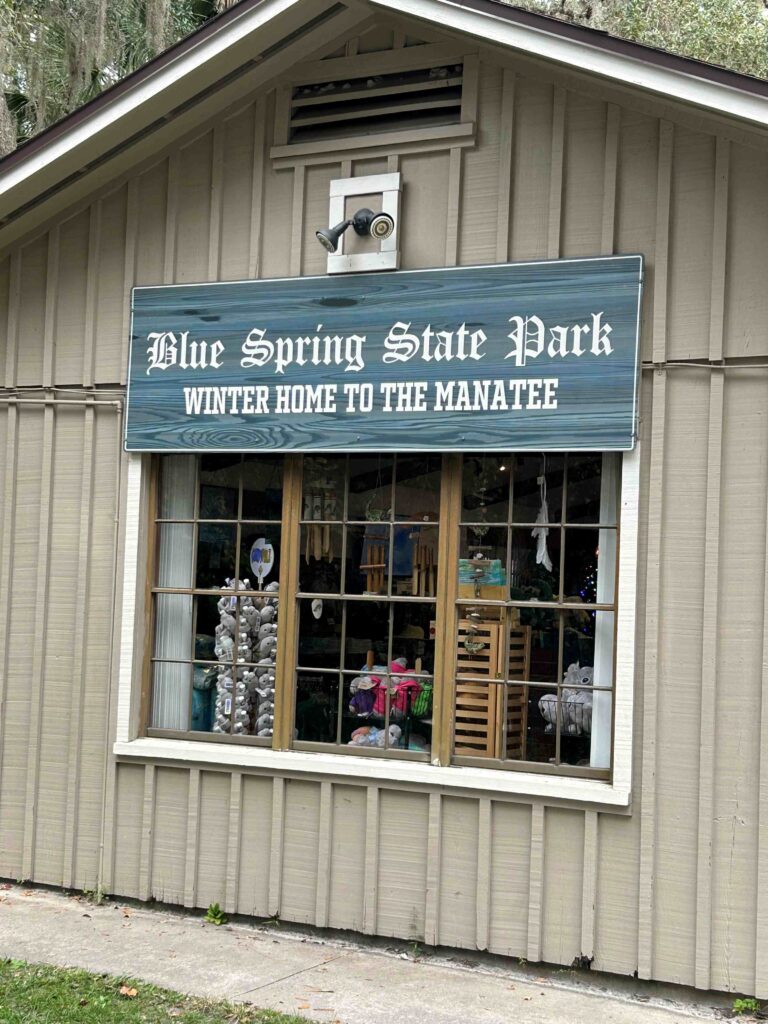
The Manatees
The Gentle Giants of Blue Spring State Park
Blue Spring State Park stands as a haven for the gentle giants of the aquatic world – the manatees. These endearing marine mammals, also known as sea cows, find solace in the park’s warm spring waters, offering visitors a unique opportunity to witness these majestic creatures up close. The best time to witness the influx of manatees at Blue Spring State Park is during the winter months, particularly from November to March. As temperatures in the St. Johns River drop, the manatees seek refuge in the constant 72-degree waters of the spring, creating a heartwarming spectacle for park visitors.
15 Facts About Manatees:
Sirenians of the Sea: Manatees belong to the order Sirenia, which includes dugongs and the extinct Steller’s sea cow.
Herbivorous Diet: Manatees are herbivores, primarily grazing on aquatic plants and sea grasses.
Slow Movers: Known for their slow and leisurely pace, manatees usually swim at an average speed of 5 miles per hour but can reach up to 15 mph in short bursts.
Size Matters: Adult manatees can reach lengths of up to 13 feet and weigh as much as 3,500 pounds.
Warm-Water Seekers: Manatees are highly sensitive to cold temperatures and seek warm waters to survive, making Blue Spring State Park an ideal refuge during winter.
Constant Grazers: Manatees spend a significant portion of their day grazing, consuming approximately 10-15% of their body weight in vegetation daily.
Unique Vocalizations: Communicating with a series of chirps, squeaks, and whistles, manatees use vocalizations to express themselves and maintain social bonds.
Low Reproduction Rates: With a gestation period of about 13 months, manatees give birth to a single calf. Mothers nurse their offspring for up to two years.
Vulnerable Species: Manatees are listed as “Vulnerable” due to habitat loss, boat collisions, and cold stress syndrome.
Highly Buoyant: Manatees have a unique skeletal structure that contributes to their natural buoyancy, allowing them to easily float at the water’s surface.
Social Creatures: While often seen alone, manatees are social animals that form loose bonds and occasionally gather in groups.
Longevity: In the wild, manatees can live up to 60 years, with a lifespan often affected by human-related threats.
No Natural Predators: Adult manatees have no natural predators, but they face threats from humans, including boat strikes and entanglement in fishing gear.
Thermoregulation: Manatees have a low metabolic rate and lack a thick layer of blubber like other marine mammals, relying on warm waters for thermoregulation.
Ecosystem Engineers: Manatees play a crucial role in shaping aquatic ecosystems by promoting the growth of seagrasses through their grazing activities.
Understanding these fascinating facts about manatees not only enhances the appreciation for their existence but also underscores the importance of conservation efforts to ensure the survival of these gentle giants in their natural habitats.
The 72-Degree Waters of the St. Johns River:
A Haven for Manatees
Blue Spring State Park in Orange City, Florida, is distinguished not only by its picturesque landscapes but also by the unique characteristics of the St. Johns River waters that flow from the spring. The remarkable feature that captivates both nature enthusiasts and the park’s most celebrated residents, the manatees, is the constant temperature of 72 degrees Fahrenheit (22 degrees Celsius). This thermal consistency is a result of the spring’s deep, narrow channel that acts as a natural conduit for the flow of the river’s waters.
The magic of the 72-degree waters lies in their warmth, providing a refuge for manatees during the cooler winter months. As temperatures in the St. Johns River drop, these gentle giants, sensitive to cold, seek the comforting embrace of Blue Spring’s spring-run. The park becomes a sanctuary, offering manatees a haven where they can escape the colder external environment. This consistent warmth becomes especially crucial for their well-being, as it helps them conserve energy and maintain their metabolic functions in a state of relative ease.
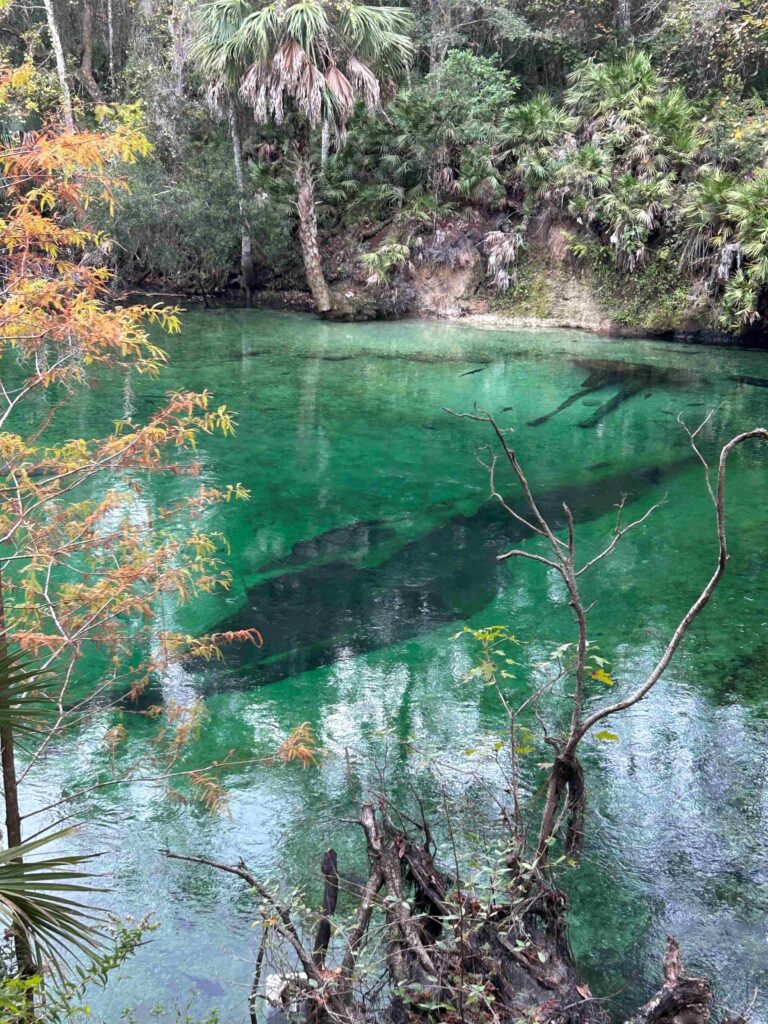
Head of the spring's deep, narrow channel
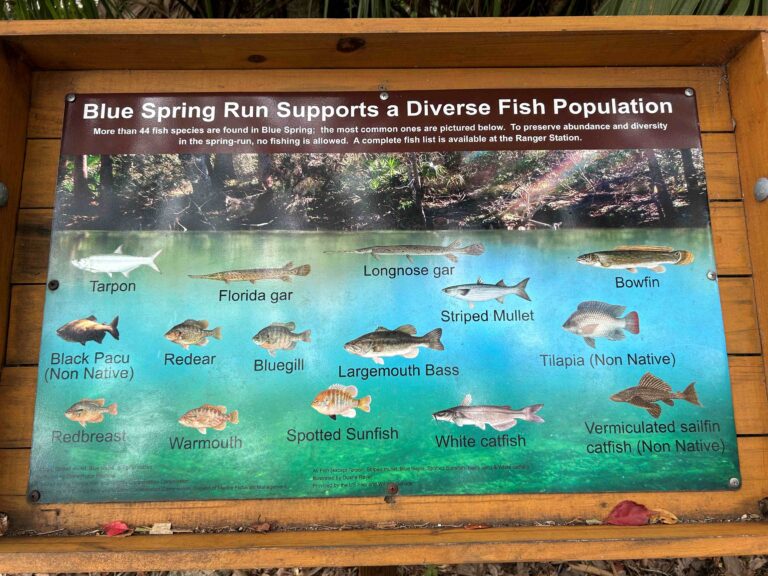
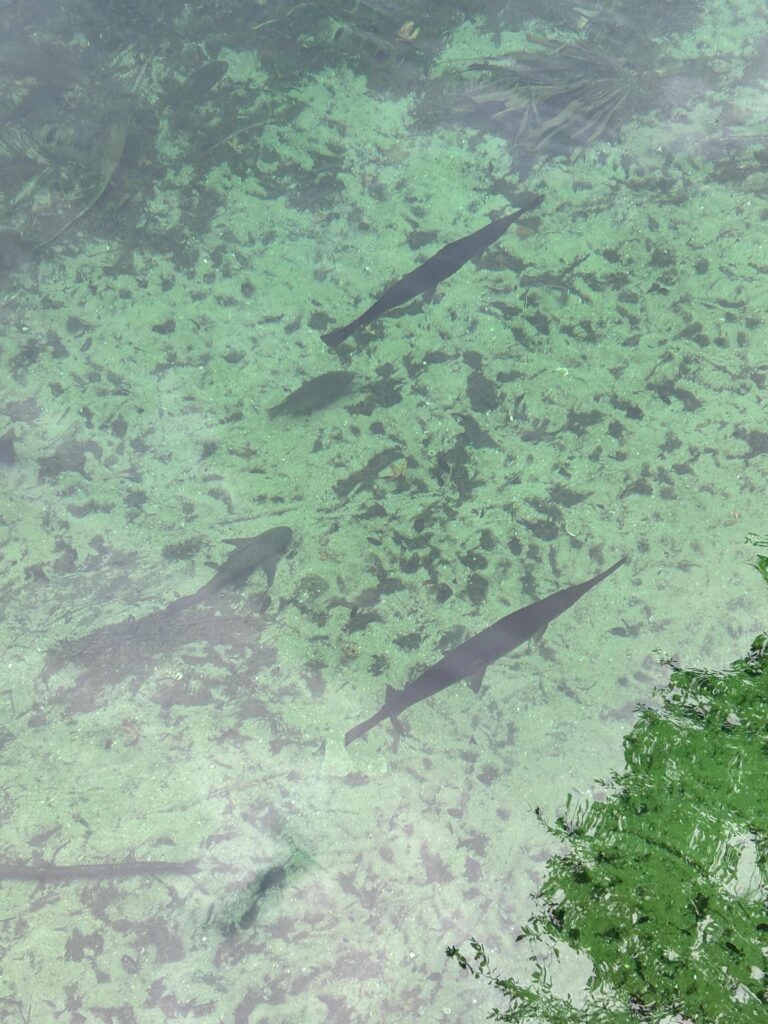
Diverse Fish Species - We saw lots of Florida Gar!
Diverse Fish Species
Diverse Aquatic Life of Blue Spring State Park:
Harmony Beneath the Surface
Blue Spring State Park isn’t just a sanctuary for manatees; it’s a vibrant ecosystem teeming with diverse fish species and other aquatic creatures that coexist harmoniously beneath the crystal-clear waters of the St. Johns River. As you delve into the underwater world of the park, a rich tapestry of life unfolds, creating a captivating spectacle for all who explore its depths.
Fish Species: The St. Johns River, flowing through Blue Spring State Park, hosts a variety of fish species that add to the park’s ecological diversity. From the sleek, silvery flashes of mullet to the vibrant hues of sunfish, visitors may spot an array of fish navigating the waterways. Largemouth bass, catfish, and gar are among the inhabitants, contributing to the intricate balance of the aquatic food chain.
Turtles: Turtles gracefully glide through the park’s waters, adding to the allure of the underwater world. The Florida softshell turtle, known for its streamlined appearance, and the peninsula cooter, with its distinctive markings, are commonly sighted. These reptiles bask in the sun on rocks and logs, offering a delightful spectacle for onlookers.
Snails and Crustaceans: Blue Spring’s ecosystem extends beyond fish and turtles to include smaller inhabitants like freshwater snails and crustaceans. These tiny creatures play crucial roles in maintaining the park’s ecological balance, contributing to nutrient cycling and supporting the overall health of the aquatic environment.
Birds: While not beneath the surface, the park’s aquatic environment also attracts various bird species. Ospreys and anhingas are often seen soaring above, diving into the water to catch fish. The park’s avian residents add an extra dimension to the interconnected web of life that thrives around Blue Spring.
Observing this underwater ballet of diverse species provides a holistic appreciation for the park’s ecological significance. It’s not just about the manatees; it’s about the delicate dance of life that unfolds beneath the surface. If you get a chance to explore Blue Spring State Park, take a moment to marvel at the interconnectedness of its aquatic inhabitants, each playing a vital role in maintaining the park’s delicate and harmonious ecosystem.
Reasons to Visit Blue Spring State Park
Blue Spring State Park in Orange City, Florida, has so many things to see and do! From boat tours, birding, swimming, camping, fishing, hiking, scuba diving and more. You can find all the amenities and experiences at Blue Spring State Park website here.
Conservation Efforts: Support conservation initiatives aimed at preserving Blue Spring’s delicate ecosystem and protecting its resident wildlife. The park actively participates in research projects focused on manatee conservation, water quality monitoring, and habitat restoration. Visitors can learn about the importance of environmental stewardship and contribute to ongoing efforts through volunteering or making a donation.
Family-Friendly Atmosphere: Create lasting memories with loved ones in a family-friendly atmosphere that fosters connection with nature. Blue Spring State Park offers amenities such as picnic areas, playgrounds, and designated swimming areas that cater to families seeking quality time together in the great outdoors. Children can participate in junior ranger programs and nature-themed activities that ignite their curiosity and instill a lifelong appreciation for the natural world.
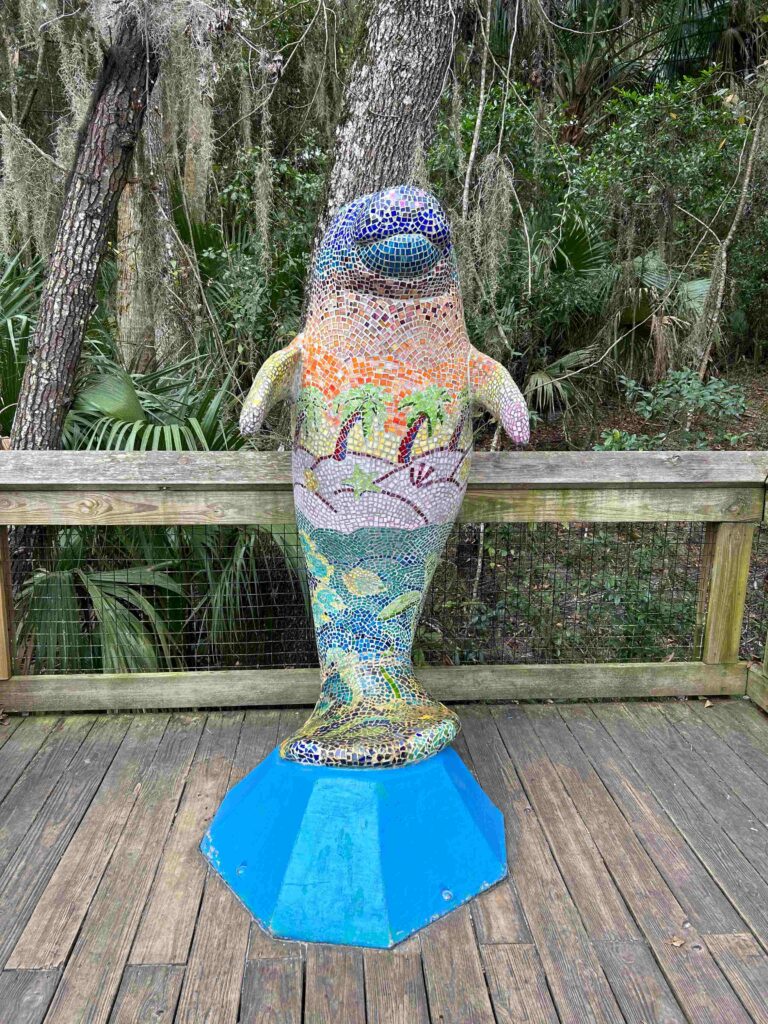
What a masterpiece!
Whether you’re seeking adventure, relaxation, or the opportunity to connect with nature, Blue Spring State Park offers something for everyone. Come experience the magic of this ecological oasis and discover why it’s a cherished destination for outdoor enthusiasts and nature lovers alike.
Want to share with others? Click below to your channel. 🙂
